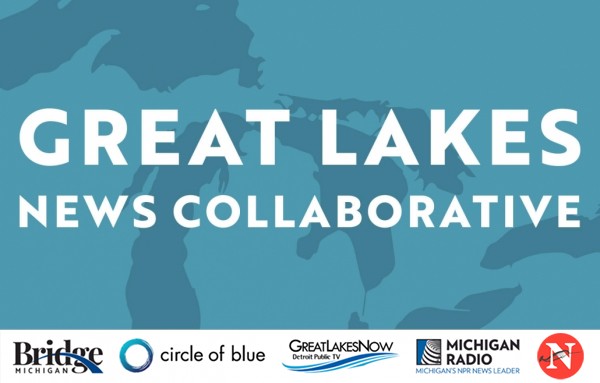Fresh, June 11, 2024: In Michigan and Minnesota, Groundwater Extraction for Bottled Water Divides Lawmakers, Residents
June 11, 2024
Fresh is a biweekly newsletter from Circle of Blue that unpacks the biggest international, state, and local policy news stories facing the Great Lakes region today. Sign up for Fresh: A Great Lakes Policy Briefing, straight to your inbox, every other Tuesday.
— Christian Thorsberg, Interim Fresh Editor
This Week’s Watersheds
- Bottled water company access to low-cost groundwater remains a contentious issue within Michigan’s government.
- As Minnesota regulators consider a bottled water company’s groundwater permit, nearby residents fear their own water supplies will suffer.
- Nearly 400 gallons of diesel fuel that spilled into Lake Superior near Silver Bay, Minnesota, were cleaned within several days, the state pollution control agency said.
- Up to 40 percent of U.S. domestic lithium needs could be extracted from fracking wastewater in Pennsylvania’s unconventional wells, a new study suggests.
A new research project on French Island in southwestern Wisconsin will monitor the flow and presence of PFAS in a large freshwater aquifer.
“The town is searching now for a long-term potable source of drinking water. All of the residents on the island currently pull their water from this shallow aquifer.” — Mike Cardiff, a geoscience professor at the University of Wisconsin-Madison.
Three wells, ranging in depth from 85 to 400 feet, were drilled last week in the town of Campbell — located on the shores of the Mississippi River — allowing university researchers to collect rock and sediment, Wisconsin Public Radio reports.
These samples will reveal if a known PFAS plume from nearby La Crosse Regional Airport is flowing deeper into the Mount Simon aquifer, “which stretches across much of Wisconsin.”
The researchers will monitor subsurface pressure, which could push the contaminants upward. That would mean the deeper aquifers would be protected. The researchers are also interested in learning how underground shale layers, which exist elsewhere in the state, might block the movement of contaminants into the deep aquifer.
The two-year study comes as the municipality makes long-term plans to establish its own water utility, which would draw from the deep aquifer, assuming the water is safe. The results of this study could help the town access federal funding for the project.
Fresh from the Great Lakes News Collaborative
- Why some municipalities are looking at putting solar panels on water — Michigan Public
- Drugs, microplastics and forever chemicals: new contaminants emerge in the Great Lakes — The Narwhal
- Energy News Roundup: Coal ash still a concern in Indiana Superfund town near Lake Michigan — Great Lakes Now
- Eight Michigan beaches reopen after E. coli levels drop, six others closed — Bridge Michigan
Bridge Michigan, Circle of Blue, Great Lakes Now at Detroit Public Television, Michigan Public and The Narwhal work together to report on the most pressing threats to the Great Lakes region’s water. This independent journalism is supported by the Charles Stewart Mott Foundation. Find all the work here.
In Michigan, Unresolved Questions About Groundwater Extraction Linger
Since Gretchen Whitmer was sworn in as Michigan’s governor in 2019, state lawmakers have introduced nine bills proposing increased protections and the “closing [of] oversight gaps” regarding the commercial pumping of groundwater for bottled water, ProPublica reports. All have failed but one, which was first read in September 2023 and has yet to have a hearing.
Leading up to the 2019 gubernatorial election, the food and beverage company Nestlé was withdrawing hundreds of millions of gallons of groundwater from Michigan and selling them, bottled, under its Ice Mountain label. While the Flint water crisis was still raging, the company paid a usage fee of only $200 per site. With such clear discrepancies, Whitmer campaigned — and won — promising to protect Michigan’s waters from being commandeered by commercial interests, keeping the resource affordable for state residents.
But in 2021, Nestlé sold its North American bottled water brands for $4.3 billion to a private equity and investment firm. Now operating as BlueTriton Brands, the company has continued to pump water from subsurface wells and contributes to a $49 billion-per-year American bottled water industry. Since Whitmer has taken office, some people say not much has changed.
“She’s basically kind of ignored us for the last six years,” Peggy Case, the board president of Michigan Citizens for Water Conservation, tells ProPublica. “Which is sad. I mean, she didn’t ignore us before the election.”
Some of the governor’s critics concede that the pandemic, along with flooding crises, have presented her administration with significant and unforeseen obstacles. Plus, others say, Whitmer has overseen lead pipe replacements throughout the state, and fought to protect the Great Lakes against the Enbridge Line 5 oil pipeline.
2023 was also the first time in nearly 40 years that Democrats have had control of both Michigan’s House and Senate, offering renewed hope that bills limiting the pumping and sale of groundwater will be forthcoming.
Others are less convinced. “When you’re making billions of dollars on bottled water, it doesn’t take much to get a team of lawyers and lobbyists to go ahead and put the fire out,” Peter Lucido, a former member of the Michigan state senate and now a Macomb County prosecutor, tells ProPublica.
In the News
Silver Bay Spill: On May 29, an estimated 373 gallons of red dye diesel were spilled into Lake Superior near Silver Bay, the Star Tribune reports. The incident occurred during a fuel transfer between a tug and a barge near the Northshore Mining Co. facility. According to the Minnesota Pollution Control Agency, the spill was contained that night with vacuum trucks and other equipment, and fully cleaned up on June 4. The agency will investigate impacts to wildlife and water.
Fracking Wastewater: A new study from researchers at the National Energy Technology Laboratory suggests that wastewater from Pennsylvania’s more than 13,000 unconventional wells — a product of the state’s fracking industry — may contain enough lithium to meet up to 40 percent of all U.S. domestic needs, InsideClimate News reports. Roughly 1,160 metric tons of the metal, a critical component in electric vehicle batteries, could be sourced annually from fracking wastewater, an outcome that environmentalists fear will encourage the expansion of oil and natural gas in the state.
Looking Ahead
Minnesota Bottled Water Proposal: Private well water in Minnesota’s New Market and Eureka townships turned yellow and gray last year, and contained black sediment, residents say, while the city was “conducting an aquifer test by pumping groundwater at higher-than-normal rates,” Minnesota Public Radio reports. The test was prompted by Niagara Bottling, a California-based company, which is seeking to build a bottled water production facility that would draw from Elko New Market’s groundwater supply. As the state Department of Natural Resources considers the company’s permit request, residents fear that history will repeat itself, and the health of their own water supplies will deteriorate with increased pumping.
Upcoming Events
June 12 — Let’s Talk Lake Ontario: Stemming the Tide – Addressing Invasive Plants Around Lake Ontario — learn more
June 13 — Meetings of the Great Lakes-St. Lawrence River Water Resources Regional Body and Compact Council — learn more
June 13 — IJC Science Advisory Board Webinar: An Early Warning System for the Great Lakes — learn more and register
June 18 — Great Lakes Seminar Series: Applying New Technology at a Great (Lake) Scale: What are We Waiting for? — learn more and register
June 24 – 27 — WEDA Dredging Summit & Expo ’24 — learn more
Other News
Rain Catchers Collective: Watershed councils in southeast Michigan have joined forces to offer residents the resources to transition from gray wastewater infrastructure — sewers, grates, and curbs, which promote the movement of pollutants — to green infrastructure, Michigan Public reports. Green infrastructure includes rain barrels, lawns, and rain gardens, which naturally filter and collect water.
Lake Ontario National Marine Sanctuary: A 1,722 square-mile portion of eastern Lake Ontario has been designated a National Marine Sanctuary — just the third in the Great Lakes region — by the National Oceanic and Atmospheric Administration. The designation will protect submerged historic and cultural artifacts, including dozens of known shipwrecks, Syracuse.com reports.
Christian Thorsberg is an environmental writer from Chicago. He is passionate about climate and cultural phenomena that often appear slow or invisible, and he examines these themes in his journalism, poetry, and fiction.









Leave a Reply
Want to join the discussion?Feel free to contribute!